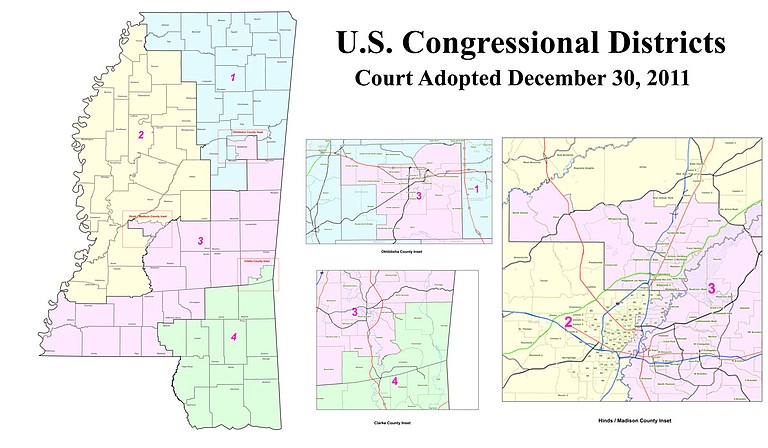States are set to receive detailed Census information in September, and Mississippi legislators will use those numbers in a tough political battle—deciding how to redraw the four U.S. House districts and the 174 state legislative districts. Photo courtesy State of Mississippi
Monday, May 10, 2021
JACKSON, Miss. (AP) — States are set to receive detailed Census information in September, and Mississippi legislators will use those numbers in a tough political battle—deciding how to redraw the four U.S. House districts and the 174 state legislative districts.
Republicans control both chambers of the Legislature and the committees that will draw new district lines, so they have an advantage over Democrats.
Three of Mississippi's U.S. House districts are majority-white and held by Republicans, and one is majority-Black and held by a Democrat. That balance is unlikely to change.
The boundaries of the majority-Black 2nd District will need to expand because people have been moving out of the rural Delta during the past decade. A similar expansion was needed, for the same reason, during redistricting 10 years ago.
A 2013 U.S. Supreme Court decision in an Alabama case eliminated the requirement for states with a history of racial discrimination, including Mississippi, to receive federal approval of redistricting plans or changes in election laws. That preclearance requirement was in Section 5 of the federal Voting Rights Act.
But people drawing Mississippi's new congressional boundaries should not be able to obliterate the majority-Black congressional district because Section 2 of the Voting Rights Act prohibits discrimination against minority voters.
Republicans also have their own interest in keeping at least one majority-Black congressional district in a state with a population that is 38% Black. Historical patterns show Black voters are more likely to support Democrats. Obliterating the majority-Black district would increase the Black population in majority-white districts, and that would give Democrats more influence and make elections harder for white Republican candidates.
Mississippi dropped from five U.S. House seats to four after the 2000 Census. Democrats firmly controlled the state House of Representatives at the time, but Republicans were gaining influence in the state Senate. The two sides deadlocked on drawing new U.S. House maps after the 2000 Census, and federal judges took over the task. Federal judges also drew Mississippi's congressional districts after the 2010 Census.
Congressional districts are supposed to be as equal as possible in population, but changes inside Mississippi during the past decade have thrown the existing districts out of balance.
A handy Census Bureau site shows 2019 population estimates for each congressional district, including details about demographics. Mississippi's estimated population then was 2,976,149. Divide that by four, and the ideal population of a congressional district at that point — years after the last redistricting — would be about 744,037. Two of the current congressional districts are over that ideal number, and two are under.
The 4th District, in the southernmost part of the state, had an estimated 775,679 people in 2019. The 1st District, up north, had an estimated 769,026.
The 2nd District stretches along the most of the western side of the state, through the Delta and into Jackson. It had the smallest estimated population in 2019, at 692,452. The 3rd District runs diagonally from the southwestern corner of the state, up through the Jackson suburbs and to Starkville. It was closest to the ideal average, with an estimated population of 738,992.
The Census Bureau released its 2020 numbers in late April, and those showed that West Virginia, Mississippi and Illinois were the only states to lose population during the past decade. Mississippi will keep four U.S. House seats.
Mississippi's 2020 population was 2,963,914, according to the Census. That makes the ideal population for each congressional district 740,949.
Redrawing congressional district lines could be contentious, but redrawing lines for the 122 state House districts and the 52 state Senate districts could be worse because redistricting committee members will be dealing with the political futures of colleagues they see face-to-face.
Fast-growing DeSoto County could gain more representation at the state Capitol. That will come at the expense of slow-growing areas where the boundaries of current legislative districts will stretched or erased. To be clear: Every Mississippi resident will end up with elected representatives, but some politicians and some constituents will be unhappy with the outcome.

Comments
Use the comment form below to begin a discussion about this content.
Sign in to comment
Or login with:
OpenID